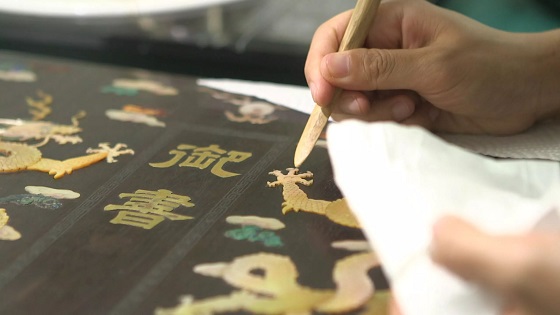创新背景
历史文物是人类文明宝贵的遗产,当前文物的保存和博物馆之间的相互借用主要存在以下几个问题:文物真假鉴定的纠结、权威估价衡定、文物权属确定的缺失、传统贸易中介信用等。利用新兴技术解决文物相关的问题,将有利于保护文化遗产。
创新过程
区块链是信息技术领域的术语,它的本质是一个共享数据库,存储于其中的数据或信息,具有不可伪造、全程留痕、可以追溯、公开透明、集体维护等特征。基于区块链的保密和安全特征,他创造了信任可靠的合作机制,目前已经广泛运用于金融和大数据等方面。

面对文物权属和信息留存等问题,区块链的去中心化和安全保密特征有极大的积极作用。历史文化遗产的独特性需要去中心化地明确时间、权属、地域等信息,区块链实际上就是独立的小循环,通过相互连接的智能设备,为彼此之间的服务交易带来便利。
将区块链技术运用于文物遗产保护,首先详细登记文物和文物权属信息,然后将信息数字化,利用区块链记录保存数字文件信息。基于区块链不可篡改、永久存储的特性,文物的实物与照片、三维模型等文物信息数据以及文物所有者将建立一一对应关系,明确文物权属,有效解决文物保管、权属、鉴定、防盗以及防损等问题。每一个环节在区块链技术下都是透明并且无法更改的。

此外,保存文物的主体如博物馆等可以加入相关区块链中,成为其中一个节点,共同构成保护文物的特殊联盟和数字网络。区块链的本质是一个每个节点参与信息传递并维护的公共数据库,博物馆加入区块链中以后,可以阅读共享文物数据库,并根据现实情况对相关数据进行及时的维护更新。
清华大学研究团队在2017年发明专利《一种基于区块链技术的文物及艺术品数字存证的方法》,为利用区块链技术保护文物遗产提供了技术支撑。
创新关键点
利用区块链技术建立文物保护信息网,明确文物权属,使文物信息透明公开,有效保护文物遗产。
创新价值
结合历史文物遗产和区块链技术,促进文物保护高科技发展,进一步加强保护措施有效性。
Leverage blockchain innovation to support heritage conservation
Blockchain is a term in the field of information technology, its essence is a shared database, stored in the data or information, with the characteristics of imforable, full traceability, traceability, openness and transparency, collective maintenance and so on. Based on the confidentiality and security characteristics of blockchain, he has created a trusted and reliable cooperation mechanism, which has been widely used in finance and big data.
Faced with issues such as cultural relics ownership and information retention, the decentralized and secure and confidential features of blockchain have a great positive effect. The uniqueness of historical and cultural heritage requires decentralized clarification of information such as time, ownership, and region, and blockchain is actually an independent small cycle, bringing convenience to each other's service transactions through interconnected smart devices.
The application of blockchain technology to the protection of cultural relics and heritage, first register the cultural relics and cultural relics ownership information in detail, and then digitize the information, and use the blockchain record to save the digital file information. Based on the immutable and permanent storage characteristics of the blockchain, the physical objects of cultural relics will establish a one-to-one correspondence between the physical objects and photos, three-dimensional models and other cultural relics information data and cultural relics owners, clarify the ownership of cultural relics, and effectively solve the problems of cultural relics custody, ownership, identification, theft prevention and loss prevention. Every link is transparent and cannot be changed under blockchain technology.
In addition, the main body of preserving cultural relics, such as museums, can join the relevant blockchain and become one of the nodes, which together constitute a special alliance and digital network for the protection of cultural relics. The essence of the blockchain is a public database that each node participates in the transmission and maintenance of information, and after the museum joins the blockchain, it can read the shared cultural relics database and update the relevant data in a timely manner according to the actual situation.
In 2017, the research team of Tsinghua University invented the patent "A Method for Digital Deposition of Cultural Relics and Works of Art Based on Blockchain Technology", which provides technical support for the use of blockchain technology to protect cultural relics and heritage.
智能推荐
机器人 | 创新利用旋转马达提高机器人跳跃高度
2022-06-29摆脱仿生依赖,专注工程跳跃技术探索提高机器人跳跃高度。
涉及学科涉及领域研究方向AI+安全工程 | 将新型X射线测量技术与AI相结合可改进爆炸物检测
2022-09-22利用人工智能(AI)和由伦敦大学学院的学者领导的团队开发的一种新的x射线方法,可以100%的检测出非法和危险物品,如爆炸物。
涉及学科涉及领域研究方向化学工程创新 | 通过确定催化位点的最佳结构加快催化剂设计
2022-08-18通过统计催化纳米颗粒不同位置位点的相邻数来确定铂基催化剂的催化位点,进而开发快速设计催化剂的方法。
涉及学科涉及领域研究方向物联网技术创新 | 弹性粘合剂配对传感器创新超声成像设备
2022-07-29结合弹性粘合剂和刚性传感器制作超声成像贴纸,弹性体延长贴纸监测时间,为医疗成像技术拓展新方法。
涉及学科涉及领域研究方向
